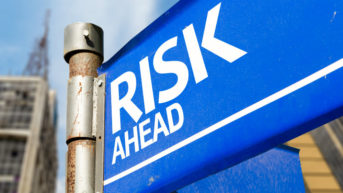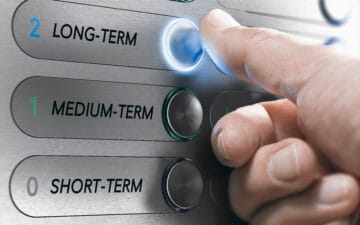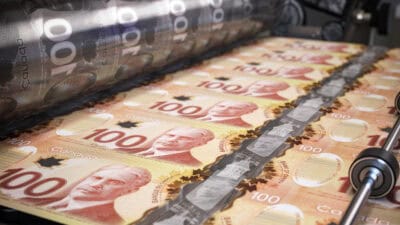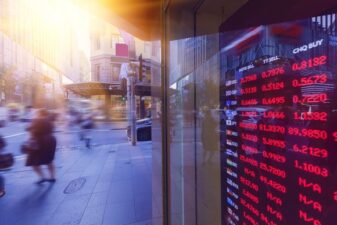When investing in stocks, you’re taking on risks for the potential of high returns. Some stocks are higher risk than others. Some of these high-risk stocks do offer potentially higher returns, but not all of them.
Depending on how big of an appetite for risk you have, you would want to avoid stocks with one or more of these three things: volatile earnings or cash flow, a weak balance sheet, and high valuations. I’ll elaborate with an example for each.
Volatile earnings or cash flow
Commodity stocks, such as Cameco Corp. (TSX:CCO)(NYSE:CCJ), have volatile earnings and cash flow, as their profitability is more or less based on the demand and pricing for the commodities they produce.
Since 2009, Cameco’s earnings and cash flow per share has pretty much been on a decline. Specifically, its adjusted earnings per share and operating cash flow per share has fallen about 82% and 25%, respectively.
If the company can’t control how much they can sell their products for, it increases the riskiness of the stock, which makes it very tough to invest in commodity stocks. In the last reported 12 months that ended September 2018, Cameco had a net margin of -2.7%. So, it was operating at a loss. Unless you’re very familiar with the industry, steer clear of Cameco.
If you’re not convinced, Thomson Reuters has a 12-month mean target of $17.10 per share on Cameco, which represents only about 10% of near-term upside potential from about $15.50 per share as of writing. You can get higher returns from stocks with more predictability.

A weak balance sheet
Here’s an example of what a weak balance sheet can do to a stock. Maxar Technologies (TSX:MAXR)(NYSE:MAXR) stock has fallen about 78% in the last 12 months despite the 15% pop in the last week.
Maxar is swimming in debt. In the last reported quarter at the end of September, the space technology company carried about US$3.17 billion of long-term debt on its balance sheet.
In comparison, it generated US$426.3 million of operating cash flow in the last four reported quarters. After subtracting capital expenditures, Maxar had US$289.7 million of free cash flow. If its free cash flow generation remained stagnant, it’d take Maxar about 11 years to pay off the debt.
Interestingly, Maxar maintained its dividend throughout 2018. With the stock now yielding close to 9% and trading at about 3.2 times adjusted earnings, Maxar is a deep value. So, it’s much better off cutting the dividend and reducing its debt levels or buying back its shares. If it’s able to reduce its debt levels over the next few years and spur growth, it could be a turnaround story.
High valuations
Do not buy even the best of stocks when they’re expensive. If you bought Canadian National Railway (TSX:CNR)(NYSE:CNI) stock at a price-to-earnings ratio of about 22, you would get subpar returns in the near term.
If you did buy the quality railway stock at that high a multiple in early 2015, you’d be sitting on annualized returns of about 5.8%. If you’d bought it in mid-2017, you’d be sitting on returns of about -1% per year. If you’d bought it in the summer of 2018, your investment would be down by about 13%.
Thankfully, Canadian National Railway doesn’t have any of the previously mentioned problems. In fact, it has a superb track record of growing its earnings and cash flow, and a clean balance sheet.
Investors are in luck right now, as Canadian National Railway stock is a decent value today. At about $100 per share, it trades at roughly 18.5 times earnings. Reuters has a 12-month mean target of $120 per share on the railway company, which represents about 20% of near-term upside potential in a quality stock. That’s a sweet deal!
In summary
Avoid companies with volatile earnings or cash flow, a weak balance sheet, and high valuations and your portfolio returns should improve substantially.







